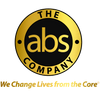3 Pillars of Stellar Customer Service
This week our very own DJ Hoffman, Director of Customer Experience, is going to share some great insights about Customer Experience. He’s been working directly with our customers for years, and now leads that experience. He definitely has some valuable tips to share. Enjoy!
3 Pillars of Stellar Customer Service
Murphy’s Law would tell you that if anything can go wrong it will. Reality tells a different story, but that is not to say that we don’t experience the occasional problem, sometimes when we least expect it (and never when we want it). Which is to say; things break. Sometimes from age, sometimes from ill-use, and sometimes they might even arrive broken (the most disappointing of all in my opinion).
We know that things can go wrong at the point of the install, or with a machine that’s been in the field for ages, and anywhere in-between. So the question becomes, “how quickly and easily can we get it fixed and back up and running?” I want to share some ideas and concepts about how we can make it stupidly simple for service techs to be able to get their jobs done and keep the owners of our products happy. In an effort to keep things real I want to point out that one of our Core Values is that We believe in constant improvement, both professionally and personally. We are constantly challenging ourselves to provide the best customer service we can. There are always ways we can improve and we’re committed to finding them and continuing to grow.
I can summarize the areas to address in three things; Accessibility, Ease of Use, and Clarity.
- Let’s start with Clarity first. This one speaks to how we have organized our parts and services. Are they clearly labeled? Does the SKU or Part Numbering system have an intuitive flow? Is it consistent from product to product? Does the manual clearly identify parts with measurements? It’s important to keep in mind your audience/end user when designing a parts system and knowing who will be making use of it, paying attention to how best to communicate with them. This will give you a firm foundation. For example, in the past we had built our part names around what the manual called them. This last spring we re-SKUed the entire parts catalog to better identify which parts worked on multiple machines and which were unique, and even which parts came from which factories. With this organization under our belts, it became very easy to see where we had created multiple SKUs over the years for the same part. Being clear about our parts helps service providers in the field be clear about what needs to be fixed when we talk about what they need to get the job done.
- Which leads to Accessibility. How accessible are you? Here at The Abs Company we’ve spent a lot of time thinking about the end users experience on our equipment. We think about owners of our equipment and how it serves them, but can a tech in the field access your parts page on the web? Is it phone friendly, or is it designed for a desktop computer? Is it laid out by product in an intuitive way, or is it just an alphabetical list of SKUs or part names? Do you call out subtle but important details on the parts page to assist in decision making process of ‘what parts do I need?’ Take serial numbers for example; over the years the location for the sticker has migrated (and in some cases due to old age may have even fallen off). A simple pop up window explaining where to look for the number, and failing that—key features to look for on the product to help identify it, saves time for everyone involved. The technician can keep working, and the office isn’t answering the phone to help clarify what’s the right part for the situation. Everybody wins when you think about how accessible your parts are!
- And finally - Ease of Use. How easy is it to get what someone needs from you? This is interwoven with Accessibility but has it’s own unique side. As an example; we recently moved our warehousing from right near the port of Long Beach, CA to New Berlin, WI. Cost wise, it’s more expensive to move all our parts and equipment further inland and it takes longer to get to the new warehouse as well. Nevertheless, we are now able to ship things all over the country for less cost to our customers, and with greater speed. It could take up to 5 days to get parts to Florida from California. Now we can have them there in 3 days! It’s important for any service department to get organized internally so that working with us is as easy as we can make it for someone on the outside. Once you do, it becomes a powerful competitive advantage.
All other things being equal and given the choice, most of us would rather do business with a company who is easy to work with and communicates clearly (more on that in a future blog). ‘Easy’ wins; just look at Staples—they built an entire marketing campaign around it and even sell Easy Buzzers!

